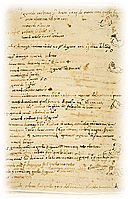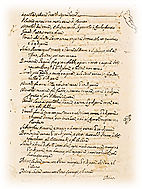
| Comune di Empoli Provincia di Firenze Regione Toscana Soprintendenza per i Beni Artistici e Storici di Firenze presents THE DIARY of Jacopo da Pontormo | |

| The diary | 
|

| Comune di Empoli Provincia di Firenze Regione Toscana Soprintendenza per i Beni Artistici e Storici di Firenze presents THE DIARY of Jacopo da Pontormo | |

| The diary | 
|

|
| Pontormo, diary |

|
| Diary of Pontormo, florentine painter written by Filippo Baldinucci |
|
|
|
|
|

